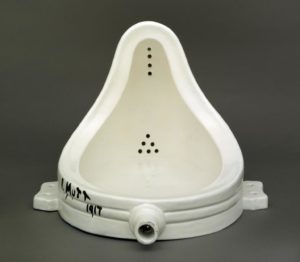Recognize context and perspective in art
Introduction
Contexts are the circumstances and background that form the setting for any kind of communication, including art, and the interpretation of its meaning(s). All artworks exist in multiple contexts. Considering different contexts can form analytical lenses through which to view and interpret an artwork.
An example of the first and most basic level of context is the time and place an artwork was created. A less discussed, but equally important, context is how or where we encounter an artwork, and how that affects our interpretation. This is part of the viewer context. Consider this photograph, The Falling Soldier, by highly regarded documentary photographer Robert Capa.
From its first release it was provocative, because it was assumed to be the first photograph of someone being shot at the moment of the bullet’s impact and the moment also, possibly, of death. Its authenticity continues to be hotly debated. When the photo was first seen in the European magazine Vu in 1936, it was accompanied by other photographs depicting the suffering of people during the Spanish Civil War. However, when LIFE magazine reprinted it in 1937 for an American audience, it was part of a two-page magazine spread adjacent to an ad for Vitalis, a men’s hair product. How might this odd juxtaposition have affected the way American audiences interpreted the photo’s meaning compared with their European counterparts?
Another provocative work of art is Marcel Duchamp’s Fountain from 1917. This “readymade” as Duchamps called his works that were “already made” completely destabilized what could be considered art. Duchamp removed a store-bought urinal from its expected context and by that simple act transformed it into a work of art. At the time it was rejected by most people as an art object, and even today it is little understood by many people, but it was a revolutionary act of artmaking and Duchamp remains a pioneer in the art world.

Fountain 1917, replica 1964 Marcel Duchamp. Purchased with assistance from the Friends of the Tate Gallery 1999. http://www.tate.org.uk/art/work/T07573
In this module you’ll learn more about context and perspective and their role in the interpretation of art.
Candela Citations
- Why It Matters: Context and Perspective. Authored by: Wendy Riley and Lumen Learning. License: CC BY: Attribution
